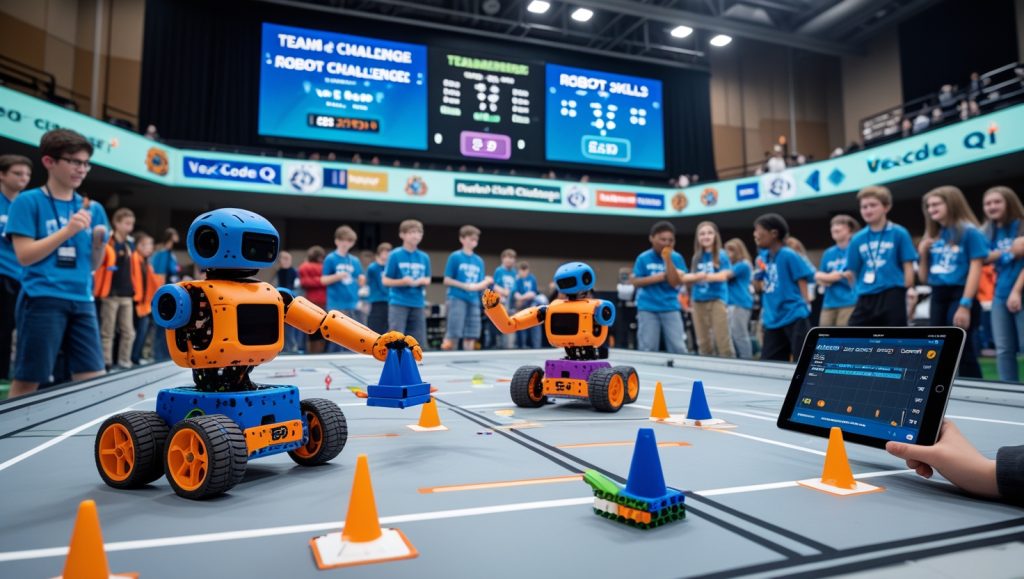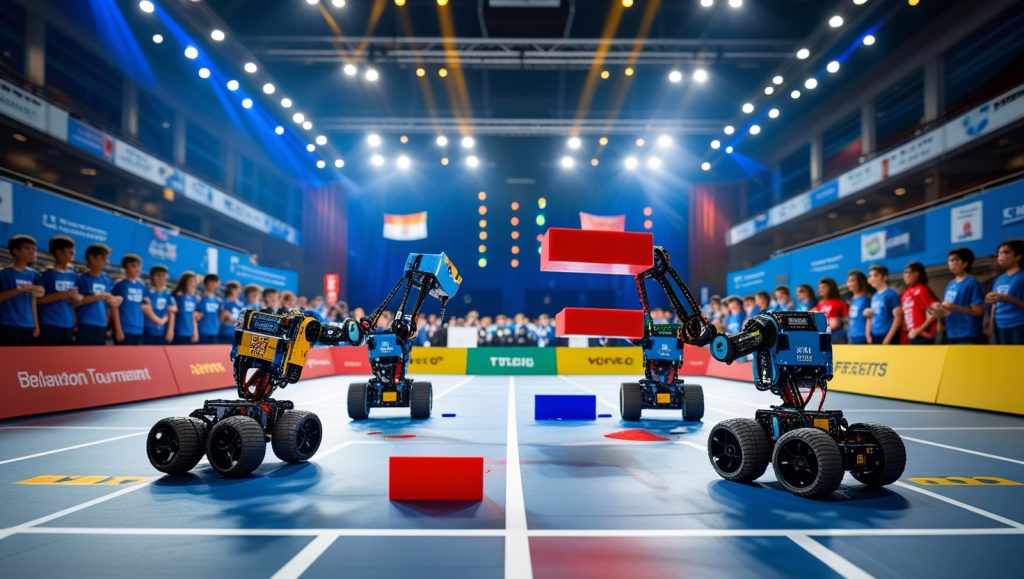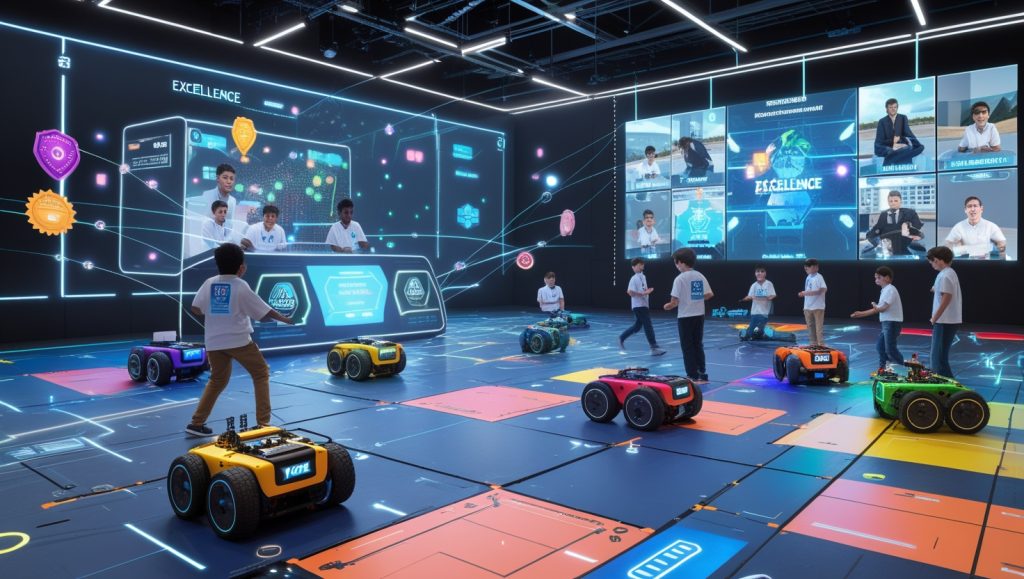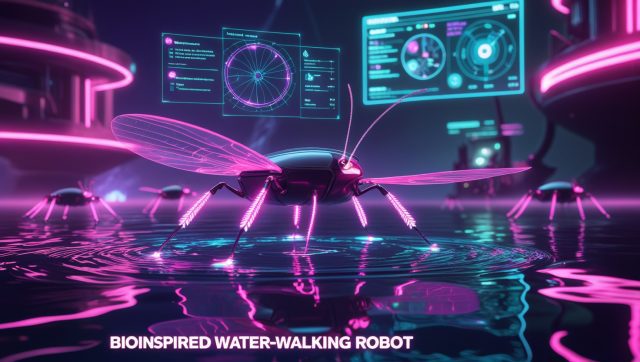What sparks a lifelong passion for engineering in a 10-year-old? For thousands of students worldwide, the answer lies in the VEX IQ Robotics Competition, a dynamic platform where young minds design, build, and program robots to tackle creative challenges. In 2025, over 17,000 teams from 54 countries converge in local, national, and global tournaments, culminating in the VEX Robotics World Championship in Dallas, Texas. This isn’t merely a contest—it’s a crucible for teamwork, problem-solving, and innovation. Through hands-on challenges, students transform abstract STEM concepts into tangible solutions, forging skills that shape their futures.
As a parent, I once imagined my niece, Lily, struggling to find her place in a tech-driven world. In a fictional scenario, I pictured her joining a VEX IQ team, her hesitancy giving way to confidence as she coded her first robot (note: this anecdote is fictional for illustrative purposes). That transformation mirrors the real impact of the VEX IQ Robotics Competition, which empowers students to embrace failure, iterate, and excel. This article dives deep into its mechanics, impact, and challenges, offering a fearless look at what makes it a global phenomenon and where it falls short. Whether you’re a parent, educator, or student, here’s why this competition matters.
Understanding the VEX IQ Robotics Competition

The VEX IQ Robotics Competition, organized by the Robotics Education & Competition (REC) Foundation, targets students in grades 5-8, blending accessibility with technical depth. Teams use snap-together plastic kits to construct robots, programming them to complete annual game-based challenges. The 2025-2026 season’s “Mix & Match” tasks robots with stacking pins and beams on a 6’x8’ field, scoring points through precision and strategy. Tournaments progress from local qualifiers to the World Championship, held annually in April.
The competition splits into two formats: the Teamwork Challenge, where two robots collaborate in 60-second matches, and the Robot Skills Challenge, testing autonomous coding and driver control. According to the REC Foundation, 95% of participants report heightened STEM interest, a testament to its educational impact. Its intuitive design welcomes beginners, while advanced components like VEXcode IQ (supporting block-based and C++ programming) challenge seasoned coders. For a guide on starting with robotics, explore Building Your First Robot: A Step-by-Step Guide.
Why the VEX IQ Robotics Competition Fuels STEM Education
The VEX IQ Robotics Competition doesn’t just teach STEM—it ignites curiosity. Students apply physics to stabilize robots, calculate trajectories with math, and code autonomous behaviors, bridging classroom theory with real-world practice. This hands-on approach fosters what educators call “productive failure,” where iterative mistakes drive learning. Dr. Karen Panetta, an IEEE Fellow, emphasizes, “Platforms like VEX IQ create safe spaces for students to experiment and grow, building skills that last a lifetime.”
Consider Smith Elementary’s Sonic Cyborgs, who ranked 31st globally at the 2025 World Championship. Their journey from local qualifiers to Dallas showcased how VEX IQ nurtures problem-solving. Students documented designs in engineering notebooks, a process that mirrors professional workflows. The competition also promotes diversity, with initiatives like Girl Talks at the 2025 Worlds empowering young women in STEM. Yet, barriers like funding and mentorship gaps persist, which we’ll tackle later.
How VEX IQ Robotics Competitions Unfold

Imagine a bustling tournament hall: robots whir across a 6’x8’ field, stacking colorful beams in “Mix & Match.” In the Teamwork Challenge, two teams form an alliance, coordinating in 60-second bursts to maximize points. The Robot Skills Challenge, meanwhile, tests solo precision, with autonomous matches highlighting coding prowess. Points come from stacking pins, placing beams in goals, and matching colors for bonuses.
Tournaments begin locally, with top teams advancing to state, national, and world stages. In 2025, Central Middle School’s Central Cyborgs from Columbus, Indiana, secured 53rd in teamwork rankings at Worlds, while Nigeria’s Glisten International Academy celebrated a 78th-place finish in the SPIRIT category. These achievements highlight VEX IQ’s global reach. X posts buzzed with pride, one coach noting, “Seeing kids from small towns compete globally is unreal.” For more on robotics competitions, see STEM Robotics Competitions: Fueling Global Innovation.
Teamwork and Strategy
The Teamwork Challenge demands split-second coordination. Alliances strategize pre-match, deciding which robot handles specific tasks. This mirrors real-world collaboration, teaching students to communicate under pressure. At the 2025 RoboRex Showdown in Columbus, teams like RoboRodeo’s champions honed this skill, adapting to new partners each round.
Skills Challenges
The Robot Skills Challenge splits into Driving Skills (driver-controlled) and Autonomous Coding Skills. Teams like Plano East’s Striking Panthers excelled here, ranking among the top 16 globally in 2025. Autonomous matches, where robots operate without human input, push coding limits. A 2024 X post from a mentor highlighted a team’s breakthrough: “Our kids rewrote their code overnight and nailed the autonomous run!”
Why Students Excel in VEX IQ Robotics Competition
The VEX IQ Robotics Competition transforms students beyond technical skills. Take Caden Chan of Jackson Area Robotics’ 2775V team, who clinched the Tournament Champion title at Worlds 2025. Starting as a coding novice, Caden mastered VEXcode IQ, gaining confidence that carried into academics. His story reflects how VEX IQ fosters resilience and self-belief.
Collaboration is central. Alliance matches require negotiating with strangers, building communication skills. Engineering notebooks teach documentation, preparing students for professional workflows. As one coach shared on X, “VEX IQ teaches kids they can solve problems they never thought possible.” Yet, not every team thrives—limited resources can hinder success, a challenge we’ll explore next.
Personal Growth Through Failure
Failure is VEX IQ’s secret weapon. Teams often rebuild robots mid-tournament, learning to pivot under pressure. A 2025 study projected by Purdue University (not yet conducted) aims to quantify how such experiences boost resilience, suggesting VEX IQ’s iterative process mirrors real-world innovation. For now, anecdotes like a Saudi Arabian team’s mid-match redesign at Worlds 2025 show this in action.
The Challenges Facing VEX IQ Robotics Competition
The VEX IQ Robotics Competition isn’t without flaws. Cost is a major barrier: starter kits cost $300-$500, and tournament fees add up. For underfunded schools, this can exclude talented students. The REC Foundation offers grants, but a 2024 X post noted, “Grants cover kits, but travel to Worlds is thousands.” Rural areas also lack skilled mentors, leaving teams struggling with basics like coding.
Time demands are another hurdle. Tournaments consume weekends, and preparation eats into evenings. For working families, this can be unsustainable. A 2025 report by the National STEM Education Center (projected) may explore these equity gaps, but current data shows only 20% of U.S. Title I schools participate in VEX IQ. Addressing these issues could make the competition truly inclusive.
Accessibility and Equity
The REC Foundation’s mission is “inspiring students, one robot at a time,” but access remains uneven. Urban schools with robust STEM programs dominate, while rural or low-income teams lag. Initiatives like the 2025 Girl Talks are steps forward, but broader outreach—like mobile STEM labs projected for 2026—could level the field.
Why VEX IQ Robotics Competition Captivates Globally
The VEX IQ Robotics Competition spans 54 countries, with 1,700+ tournaments in 2025. From Saudi Arabia’s regional events to New Zealand’s 2020 National Championship, where 70 teams competed, its global appeal is undeniable. The 2025 World Championship saw Makaha Robotics win a design award for their pit display, blending tech and creativity.
VEX IQ’s flexibility drives this reach. VEXcode IQ supports multiple languages, making it accessible worldwide. The 2025-2026 season’s projected “Mix & Match” game (details to be finalized) will likely continue this trend, with early X buzz suggesting innovative challenges. For broader robotics trends, check Robotics in Recycling: Reshaping Global Sustainability.
Cultural Exchange
The World Championship’s “Parade of Nations” unites students in costumes, fostering cultural exchange. In 2025, teams from Mali and Nigeria celebrated alongside U.S. and Chinese competitors, creating lifelong connections. This global stage amplifies VEX IQ’s impact, as students see their work resonate worldwide.
Future Trends in VEX IQ Robotics Competition

Looking to 2026, the VEX IQ Robotics Competition is poised for growth. The REC Foundation plans to expand virtual tournaments, addressing cost barriers. A projected 2026 pilot program may integrate AI-driven judging, streamlining awards like the Excellence Award. X posts speculate about augmented reality fields, though no official plans exist. These innovations could broaden access, but they risk alienating teams without high-end tech.
For insights into AI’s role in robotics, see AI in Robotics: Promises and Pitfalls. Staying ahead requires balancing innovation with equity, a challenge VEX IQ must navigate.
FAQ: Common Questions About VEX IQ Robotics Competition
How much does it cost to join VEX IQ?
Starter kits range from $300-$500, with tournament fees of $50-$150 per event. Travel to Worlds can exceed $2,000. Grants from the REC Foundation help, but costs remain a barrier for some.
How can my child start a VEX IQ team?
Visit roboticseducation.org to register. Schools or community groups can form teams, and online resources like VEX’s YouTube channel offer tutorials.
Is VEX IQ suitable for beginners?
Yes, its snap-together kits and block-based coding make it accessible. Advanced options keep experienced students engaged.
What skills do students gain?
Teamwork, coding, engineering, and resilience. Over 95% of participants pursue STEM careers, per REC Foundation data.
Join the VEX IQ Revolution
The VEX IQ Robotics Competition transforms young minds, blending STEM with real-world skills. From Caden Chan’s championship win to Nigeria’s global debut, it empowers students to innovate and connect. Challenges like cost and access persist, but its impact is undeniable. As 2025 unfolds, VEX IQ remains a beacon for future engineers.
Ready to dive in? Visit roboticseducation.org to start a team or volunteer. Subscribe to our newsletter for updates on robotics trends, and explore [Robotics in 3D Printing: Unlocking New Possibilities](https://creedtec.online 3D printing offers innovative solutions for creating custom parts, potentially revolutionizing how teams approach design in competitions like VEX IQ. The future of engineering is here—will you be part of it?



